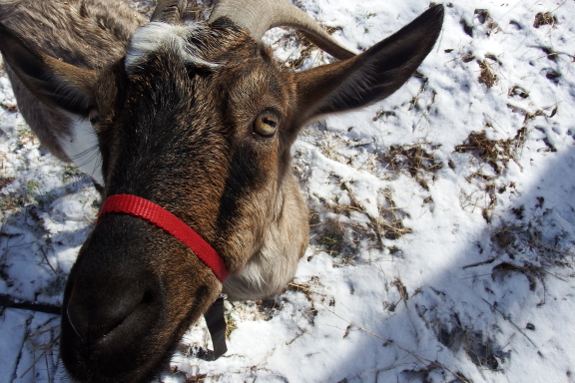
10 tips for heating with wood

 Mark's in school today, which means you're supposed to not get an evening post. But I couldn't resist sharing this link to a piece I recently wrote for Mother Earth News about using a wood stove.
Mark's in school today, which means you're supposed to not get an evening post. But I couldn't resist sharing this link to a piece I recently wrote for Mother Earth News about using a wood stove.
I'd be curious to hear what those of you well-versed in wood heat would
add to the list. You can comment here, of course, but I'd love to see a
few comments on the Mother Earth News post itself. Maybe if it gets
enough traffic, they'll put it in the print magazine!
(And, no, the photo of Abigail has nothing to do with wood heat. But doesn't she look sweet against the snow?)
Want more in-depth information? Browse through our books.
Or explore more posts by date or by subject.
About us: Anna Hess and Mark Hamilton spent over a decade living self-sufficiently in the mountains of Virginia before moving north to start over from scratch in the foothills of Ohio. They've experimented with permaculture, no-till gardening, trailersteading, home-based microbusinesses and much more, writing about their adventures in both blogs and books.
Want to be notified when new comments are posted on this page? Click on the RSS button after you add a comment to subscribe to the comment feed, or simply check the box beside "email replies to me" while writing your comment.

Two things I would add: You implied this, but if you have a stove with a secondary burn chamber you will extract a higher heat/efficient level as well as decreasing creosote and other particulates.
Also I am a big fan of brick or granite blocks to add heat storage to the system. It extends heating comfort range.
Gerry --- Good point. Plus, I completely forgot to mention chimney sweeping. Oops!
James --- Yeah, that's mostly why I wrote it. I had a bear of a time starting fires when I was new to this! Now it seems so easy....
Just posted this at MEN, but figured I'd copy and paste here, too. Those are great tips. Two things I would add:
Make sure your wood is dry, and starts drying as soon as possible after you cut it. Getting bone-dry wood to light is so much easier than wood with even a little bit of moisture or wood that was stacked out in the elements for a season after being cut.
Learn how to make fire starters from paraffin wax or (preferably) beeswax (and/or slumgum). They light easily and burn clean for a surprisingly long time.
With those two tips, I have been able to reliably start a fire with regular-sized (split and bone dry) oak logs, no kindling needed.